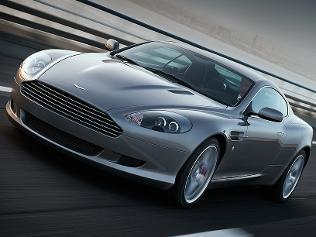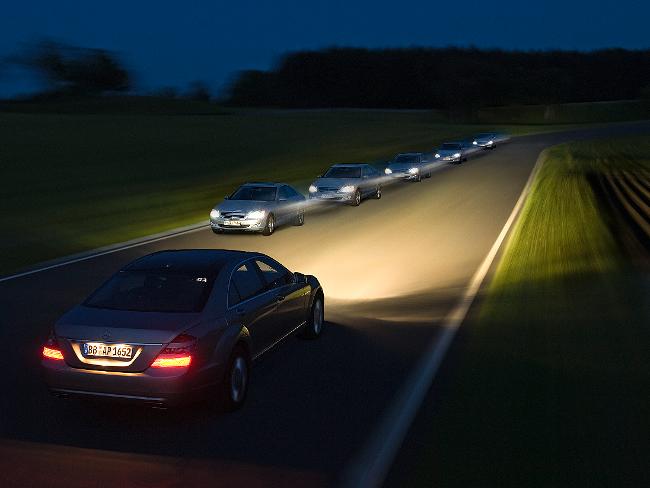Mercedes-Benz, the company that has introduced more of these than most (air bags, seatbelt pre-tensioners, traction control) recently added Night View Assist, an infra-red camera that picks up approaching obstacles and displays them on a dashboard screen, as an option in the S-Class, and devised a new headlight system that is standard across three models. But the best innovations concern luxury. Here’s hoping these seven brilliant ideas will all be adopted by imitators. After all, why should Rolls-Royce passengers be the only ones with starlit roofs?
GALLERY: The cars we love
Reclining rear seat - Lexus LS600h and Maybach 62. One of the seats in the back of the LS600h – the one behind the passenger – reclines like a business-class airline seat. Press a button, and, provided nobody is sitting in front, the seat leans back and a footrest rises, pushing the front seat right up to the dash at the same time. Naturally, there is a DVD screen that descends from the roof. And just when you thought it couldn’t get any more relaxing, check out the remote in the console – it operates the seat massager. The Maybach version is even better; there is so much leg room in this car that the front seats can stay where they are while the rear seats transform into recliners. Starlit roof - Rolls-Royce Phantom Coupe. The designers of this luxury car came up with a perfect solution to the claustrophobic feeling of sitting in the back of a coupe – open up the roof to the night sky. Well, at least make it seem so. Hundreds of fibre-optics in the roof give the impression that you are driving around with the roof down at night. The “stars” are even adjustable for brightness. The rear seat itself is curved like a lounge, adding to the cosy, luxurious feeling. Neck warmer – Audi A5, Mercedes SLK and SL convertibles. This Mercedes invention allows you to take the top off during the colder months, when other roadster drivers are couped back up in their cabins. Vents in the headrests blow hot air onto the neck of the driver and passenger, automatically adjusting to speed and changes in temperature. Stay warm, look cool. Read more about the SLK, A5. Adjustable-tint sunroof – Ferrari Superamerica and Maybach. This is such a great idea that it should be compulsory, not optional. The opacity of the glass in the sunroof can be adjusted, a bit like those sunglass-spectacles grandpa used to wear. In the case of the Ferrari, it can go from clear glass to 1 per cent light in 60 seconds. Unfortunately, the concept has been around since Maybach implemented it in 2002 (Ferrari added it in 2005), so if there was a cheap way for, say, Toyota to replicate it, it probably would have happened by now. Sigh. Seamless bonnet – Aston Martin. Ever wondered why an Aston Martin looks so intimidating in the rear-view mirror? The reason is a little aesthetic detail that subconsciously signifies the car means serious business. It’s the panelling in the front end. The seams go all the way to the nose of the car – there are no lateral joins around the bonnet or headlights. This is not a cheap way to make a car. Even Ferrari and Lamborghini cut these corners, which is why their appearance in the rear-view isn’t quite as impressive. Read more about the Aton Martin V8 Vantage. Dual-view video screen – Mercedes S-Class, Jaguar XJ. Fitting all the latest gadgets into the confined space of a dashboard is a dilemma. Almost all new cars have a screen in the dash for the GPS, which is fine for the driver, but what about the passenger? Mercedes and Jaguar have ingeniously utilised the GPS screen by enabling it to display something else – a movie or TV, which it is illegal for drivers to watch – at the same time. Two perspectives, two different pictures. The S-Class is available now; the XJ will be available in early 2010. Intelligent headlights - Mercedes E-Class. Driving at night can feel serene, but it is dangerous. Apart from scanning the dimly lit periphery for possible obstacles, the driver needs to constantly switch from high to low beam, which is a distraction from the actual job of driving. Mercedes has solved this by eliminating high and low beam altogether. A sensor on the windscreen detects oncoming traffic and dips the lights to a point just in front of the oncoming headlights. If there is no oncoming traffic, the lights automatically go to maximum, illuminating to a massive (and safe) 300m. The feature is available in the Mercedes CLS and S and E-Class. More related stories
MotoringA Chinese ute with its unusual design and luxury features could force Australia’s leading carmakers into a price war.
Read more
LifeAfter years of fatigue and disillusion with online romance, young people across Australia are finding success with a nostalgic style of dating from the ’90s.
Read more




